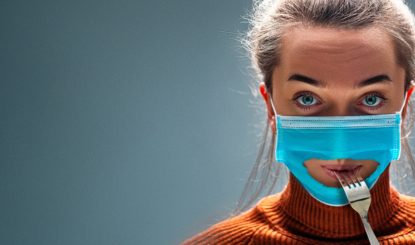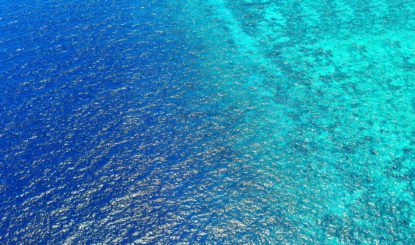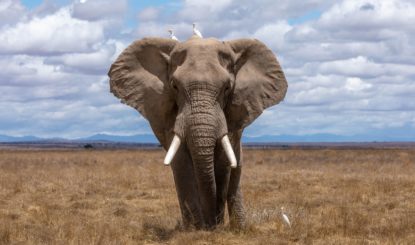COVID-19: Millions of animals are paying the deadly price for human vaccines
In our headlong quest to provide a human cure for COVID-19, other species are paying a deadly price, some of whom will become critically endangered as a result. From mice and monkeys to horseshoe crabs and sharks, millions of animals are either being killed for their products; or are undergoing lethal experiments in an effort to provide effective human vaccines for the pandemic.
Sharks
Many species of sharks rely on a special oil in its liver to survive the pressures of the deep. Shark liver oil, or squalene, is a fatty substance that provides vital buoyancy for these critically endangered species. Unfortunately, squalene is also a boosting agent in vaccines, called an adjuvant, that improves the human immune system and makes vaccines more effective. According to “National Geographic”, roughly three million or more sharks worldwide are being fished out each year for their squalene.1
Conservationists fear that increased demand for squalene for vaccines could further imperil shark species, a third of which are vulnerable to extinction. Fishermen tend to target deep-sea species, which have the biggest livers and thus the highest concentrations of the oil. These sharks are especially vulnerable to overfishing because they mature slowly—some take a decade to begin reproducing – and have few offsprings.2
Furthermore, losing top marine predators could be disastrous for the overall marine environment. Sharks keep these ecosystems intact. A loss of the ocean’s top predator will see the entire deep-water marine ecosystem suffer.
Horseshoe Crabs
For most pharmaceutical companies, horseshoe crabs provide a crucial resource for making human medicines safe. Horseshoe crab are not true crabs but are closer related to arachnids, like spiders. Their blood is bright blue. It contains an important extract that is exceptionally sensitive to toxic bacteria. When this extract meets invading bacteria, it clots around them and protects the rest of the horseshoe crab’s body from toxins. Scientists used these blood cells to develop a test, which checks new vaccines for contamination. This technique has been used all over the world to stop medical professionals giving out vaccines full of bad bacteria that could make humans ill. Every year, pharmaceutical companies round up half a million horseshoe crabs in the United States, bleed them alive for use in the vaccines and return them to the ocean— after which many will die. This practice has caused a drastic decline in the species in the past few decades.3
Many animals have become extinct
In 2019, the International Union for the Conservation of Nature (IUCN) and other conservation groups around the world called for stronger rules to protect horseshoe crabs, more scientific research and better protections for their coastal habitat. Many species are classified as endangered and have already become extinct in Taiwan and may soon disappear from Hong Kong and other areas in Asia.4
And all this before the onset of COVID-19. Horseshoe crabs have been exploited for their blood since the 1970s. Now with the pandemic and billions of humans requiring vaccines, the bleeding of horseshoe crabs will certainly set them on a path toward global extinction as well as cause untold devastation of coastal marine systems. Like sharks, these crabs do an important job of supporting other animals around them. The IUCN says, “The horseshoe crab is a critical link to coastal biodiversity. One of their ecological functions is to lay millions of eggs on beaches to feed shorebirds, fish and other wildlife. Its large hard shell serves as microhabitat for many other species such as sponges, mud crabs, mussels and snails.” Without them, coastal marine systems will collapse.5
Laboratory tested animals
Hundreds of thousands of mice, monkeys, ferrets, hamsters, cats, rabbits and pigs are currently being used as models for predicting what effects a vaccine or treatment for COVID-19 may have on the human body. The animals are deliberately infected with COVID and the effects analysed. Most of the animals die or have to be ‘destroyed’ because of contamination. Some animals, such as monkeys, have their brains, lungs and other tissues extracted to make up part of the vaccines.6
These animal trials are time-consuming and costly and many scientists believe they do not show a true reflection of results due to their different immune systems and other physical traits in comparison to us. Many argue that animal testing is slowing down the development of medicines that will help humans.7
Non-animal alternatives
There are, however, many effective, less costly and time consuming non-animal products that could be used for COVID-19 vaccines. For example, squalene is not only found in sharks. The ingredient is also widely found in plants such as sugarcane, olives, amaranth seeds and rice bran.8
The same for horseshoe crabs. According to an article by the Natural History Museum in the United Kingdom, biologists at the University of Singapore in the late 1990s realised that a synthetic alternative could be created in a lab by cloning a molecule in the crab blood. Some governments, including the Japanese and Chinese, have approved these synthetic tests for use. It is also likely that a new COVID-test manufactured in the United Kingdom will use synthetic ingredients, which are also approved by the European Union. Pfizer said they won’t be using crab blood in their vaccine.9
However, synthetic ingredients and alternative tests are not widely used in most countries, like the United States, or by most of the main pharmaceutical companies. As a result, wild and laboratory animals will continue to be killed by the millions.10
Addressing the root cause
Of course, the best way to handle a pandemic is to ensure it does not happen in the first place. Most pandemics, including COVID-19, have actually been caused by humans consuming and breeding animals. Nearly all zoonotic disease outbreaks over the last 120 years are inextricably linked to animal exploitation and consumption.11
As the world scrambles to find a treatment to the health and economic symptoms of this coronavirus pandemic using animals, we are in fact ignoring the root of the problem. If we are to prevent another COVID-like pandemic from occurring again, we will have to rethink our current treatment of animals, which must include a drastic reduction in invading and exploiting their habitat, harvesting, trading, breeding, testing and consumption of animals.
Sources:
1 Meneguzzi, J. (13. November 2020) Why covid-19 vaccine could further endanger deep-sea sharks National Geographic
2 Ibid.
3 Pavid, K. (3. Dezember 2020) Horseshoe crab blood: the miracle vaccine ingredient that’s saved millions of lives Natural History Museum
4 Ibid.
5 Ibid.
6 Saunders, S. 7 things you need to know about experiments on animals and covid-19 People for the Ethical Treatment of Animals (PETA)
7 Prater, D. (9. April 2020) Scientists Worldwide Work to Fight COVID-19 Without Hurting Animals People for the Ethical Treatment of Animals (PETA
8 Meneguzzi, J. (13. November 2020) Why covid-19 vaccine could further endanger deep-sea sharks National Geographic
9 Pavid, K. (3. Dezember 2020) Horseshoe crab blood: the miracle vaccine ingredient that’s saved millions of lives Natural History Museum
10 Arnold, C. (2. Juli 2020) Horseshoe crab blood is key to making a COVID-19 vaccine—but the ecosystem may suffer National Geographic
11 Galster, S. (24. Februar 2021) Wuhan is our wakeup call, we must stop the commercial trade in wild animals to prevent further pandemics The Independent


